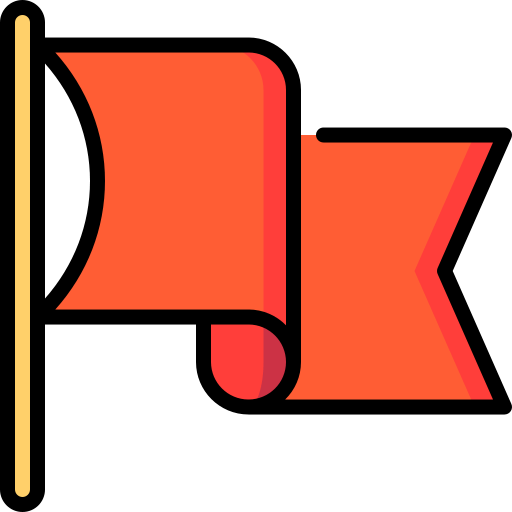Flag of the Netherlands
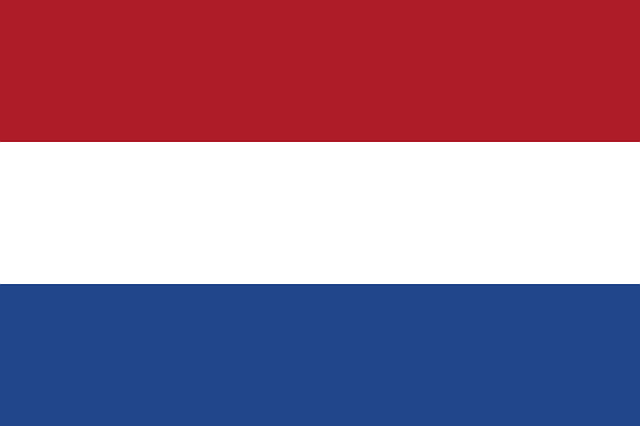
Dutch flag
- Official approval of the flag: 1937 year
- Flag emoji: 🇳🇱
- Period: Modern flags
- Type of flag: Flags of countries • Flags of continental countries
- Belonging to the continent: Europe
- Colors on the flag: white • blue • red
- Emblem on the flag: Without emblem
The Netherlands is located in western Europe, bordering Belgium and Germany and washed by the North Sea. Its capital is Amsterdam, although the government is located in The Hague. The country covers an area of 41,543 km² and has a population of about 17.5 million people. The official language is Dutch, and Frisian is also spoken in the province of Friesland. The Netherlands is known for its liberal society, canal system, and unique approach to urbanism. The main national composition is Dutch, with communities of Turks, Moroccans and Indonesians.
The flag of the Netherlands, known as the “red, white and blue tricolor”, is the official symbol of the Kingdom of the Netherlands. Its horizontal design of three stripes has a long history and deep symbolic meaning. It is one of the oldest national flags in the world and has become the prototype for many other national flags.
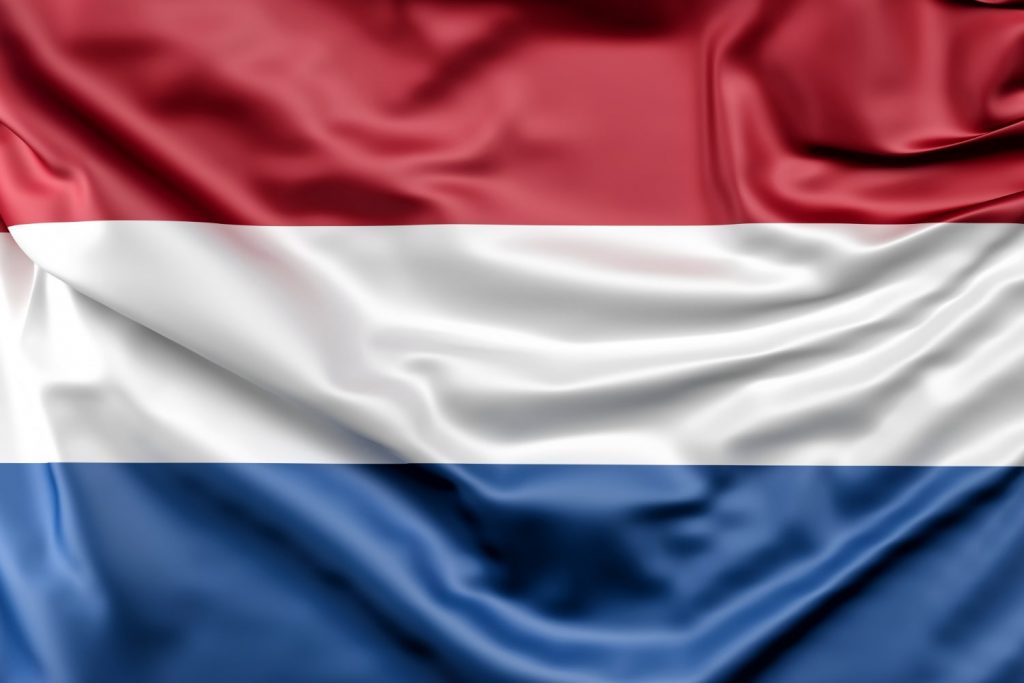
History of the Dutch flag
The history of the Dutch flag is closely linked to the struggle for independence from Spain and the formation of national identity.
The origin of the flag
- XVI century: During the Eighty Years’ War (1568-1648), when the Netherlands fought for independence from Spain, a flag with orange, white and blue stripes was used. This flag, known as the “Prince’s Flag” (Prinsenvlag), was created in honor of the Prince of Orange, William I of Orange, the leader of the struggle for independence.
- XVII century: The orange stripe is gradually replaced by the red stripe due to its better visibility at sea and political influence.
Adoption of the modern flag
In 1937, Queen Wilhelmina officially approved the red, white, and blue tricolor as the national flag of the Netherlands. This flag is still in use today.
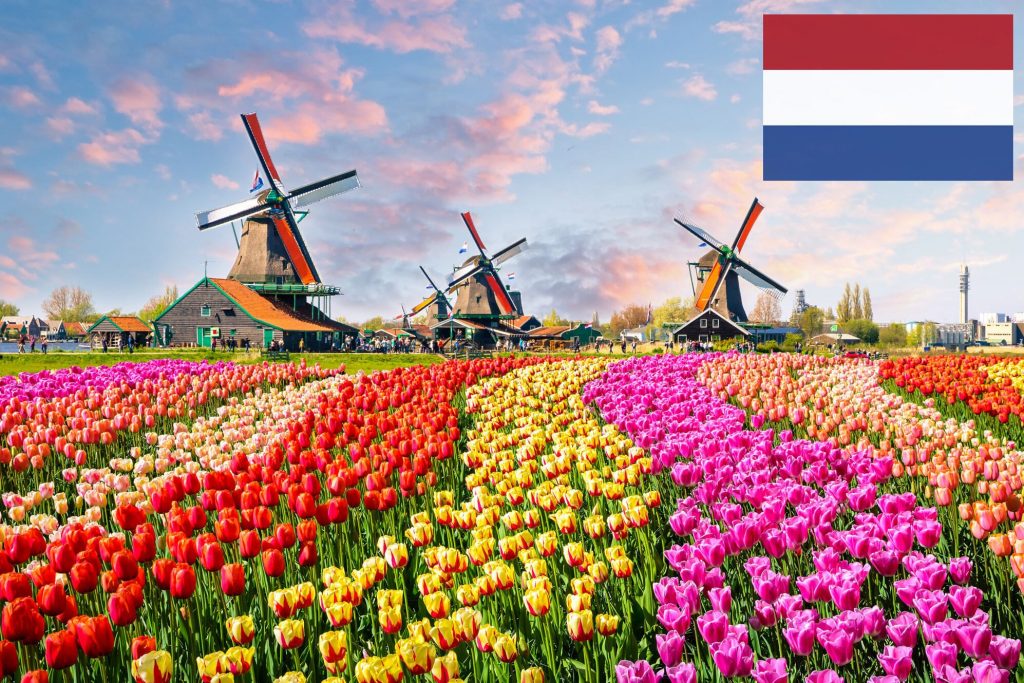
Colors of the Dutch flag
Meaning of the colors of the flag
The colors of the Dutch flag have both historical and symbolic meanings:
- Red:
- Symbolizes bravery, strength and the fight for independence.
- Replaced from orange, but retains a connection to the Orange dynasty.
- White:
- It represents peace, honesty, and spiritual purity.
- It is a symbol of the desire for harmony.
- Blue:
- Symbolizes devotion, loyalty and freedom.
- It represents the country’s connection to the sea, which plays an important role in Dutch life.
Color codes
The official colors of the Dutch flag are approved for accurate representation:
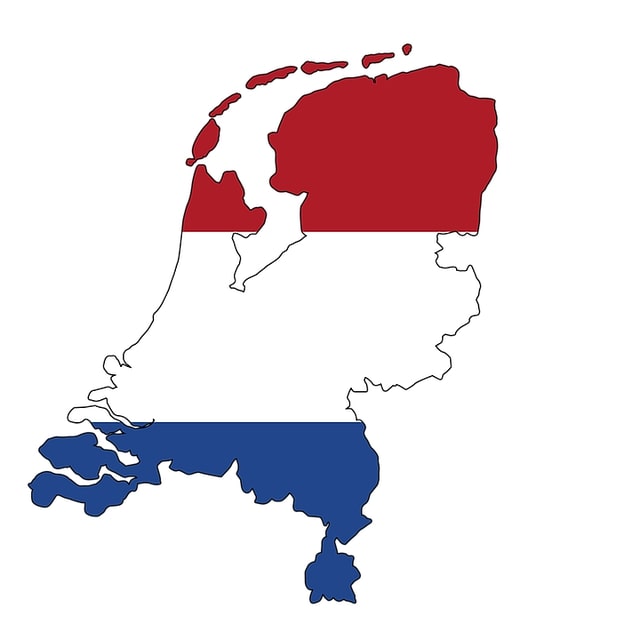
- Red:
- RGB: (174, 28, 40)
- HEX: #AE1C28
- CMYK: (0, 84, 80, 32)
- Pantone: 186 C
- White:
- RGB: (255, 255, 255)
- HEX: #FFFFFF
- CMYK: (0, 0, 0, 0)
- Pantone: White
- Blue:
- RGB: (33, 70, 139)
- HEX: #21468B
- CMYK: (100, 85, 5, 22)
- Pantone: 286 C
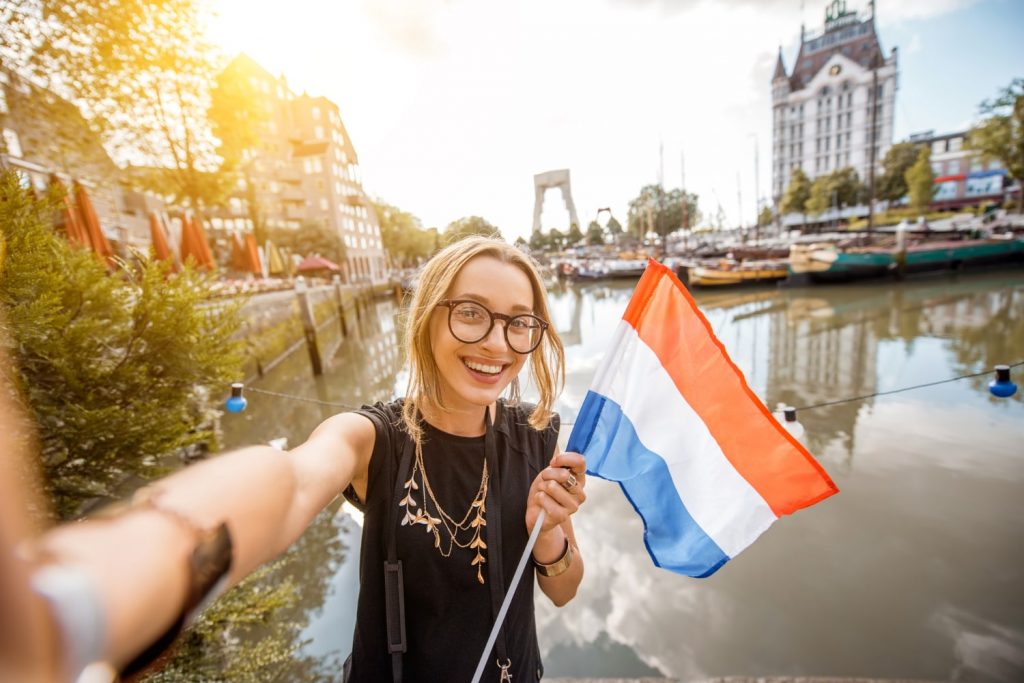
Format and proportions
The flag of the Netherlands has a standard horizontal tricolor design.
Flag proportions
The standard aspect ratio of the flag is 2:3, which is typical for most national flags.
Stripes arrangement
The flag consists of three horizontal stripes of equal width:
- The top stripe is red.
- The middle stripe is white.
- The bottom stripe is blue.
In case of vertical hanging, the order of colors remains the same from top to bottom.
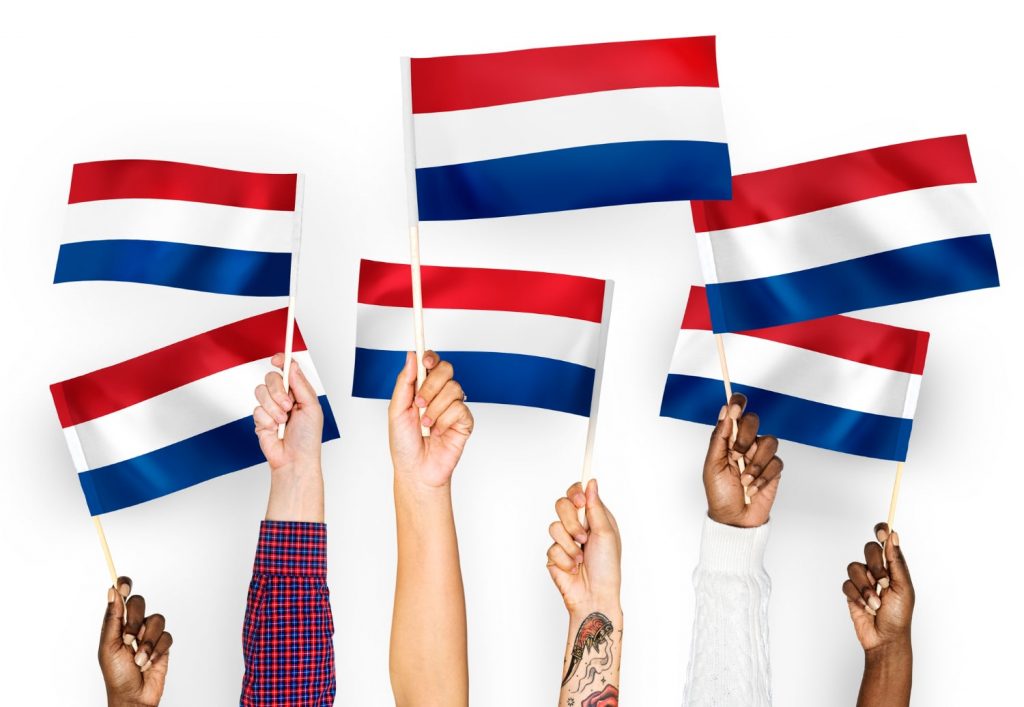
Interesting facts about the flag of the Netherlands
- The princely flag: The orange, white, and blue flag is still considered an important historical symbol and is used during the King’s Day celebrations (Koningsdag).
- Inspiration for other flags: The flag of the Netherlands has become the prototype for the flags of many countries, including Russia, Luxembourg and South Africa.
- National Flag Day: On King’s Day and other national holidays, the flag is flown throughout the country, often with an orange ribbon attached, a symbol of the royal Orange dynasty.
The Dutch flag is more than just three colors. It represents a long history, a struggle for independence and a connection to the sea, which is an important part of the country’s life. Its simple but elegant design symbolizes strength, unity and loyalty to tradition.
